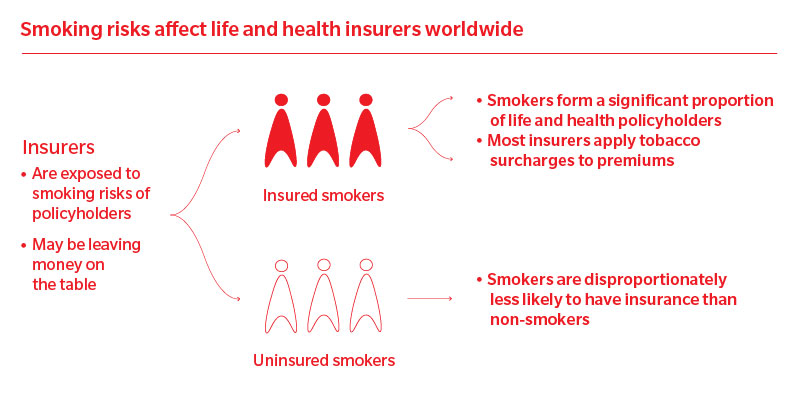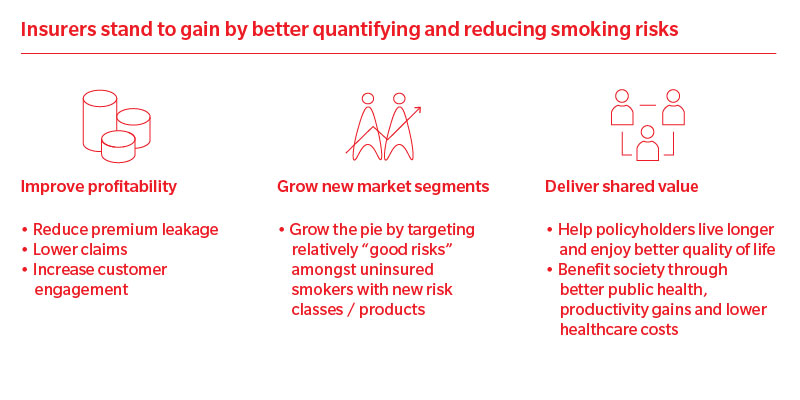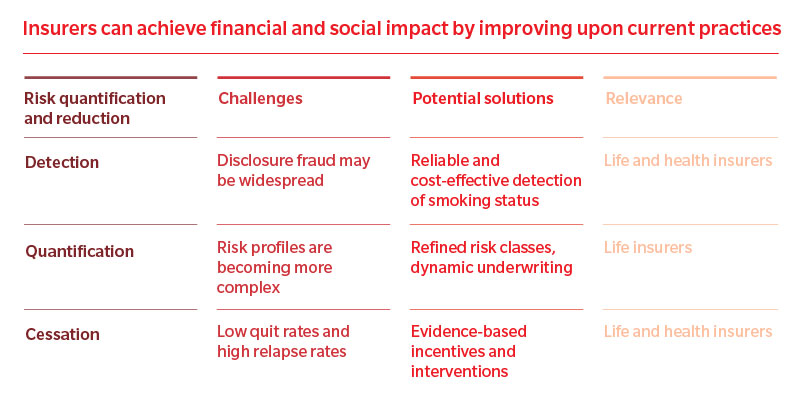Smoking risks affect insurers worldwide. Tobacco risks and regulations affect underwriting, pricing, claims and reserves in all countries. Smokers account for a significant proportion (10–15 percent) of life and health insurers' books of business, and insurers worldwide are exposed to the mortality and morbidity effects of tobacco. Smokers also number disproportionately among the uninsured, and insurers may be missing out on smoker segments that are insurable – relatively “good risks” within a spectrum – but currently priced out of the market.


Since the late 1980s, the standard practice for quantifying and managing smoking risks has been to apply tobacco surcharges to premiums, and many insurers also provide access to smoking cessation incentives and interventions. Insurers have not radically changed their underlying approach for decades, even while the landscape has evolved:
- Tobacco risks are becoming more complex, with evolving products, regulations and patterns of use; and
- New technologies and solutions are emerging to improve risk assessment and smoking cessation.
It’s time for insurers to rethink how they quantify and reduce smoking risks. Insurer Perspectives on Smoking Risks draws on a global survey as well as interviews with insurers, reinsurers and other relevant stakeholders to provide the industry with ideas and actions that can be taken to improve profitability, grow new market segments, and deliver shared value by improving public health.
The report reviews current insurer practices and challenges relating to how they detect policyholders’ smoking status, quantify smoking risks, and reduce risks through smoking cessation. It then recommends potential solutions leveraging emerging technologies, products, and processes to address these barriers. Solutions are illustrated with real-world case studies from organizations innovating at the frontier.
Exhibit: Challenges and potential solutions

Source Marsh & McLennan Insights analysis
This report was funded by a research grant provided by the Foundation for a Smoke-Free World.








